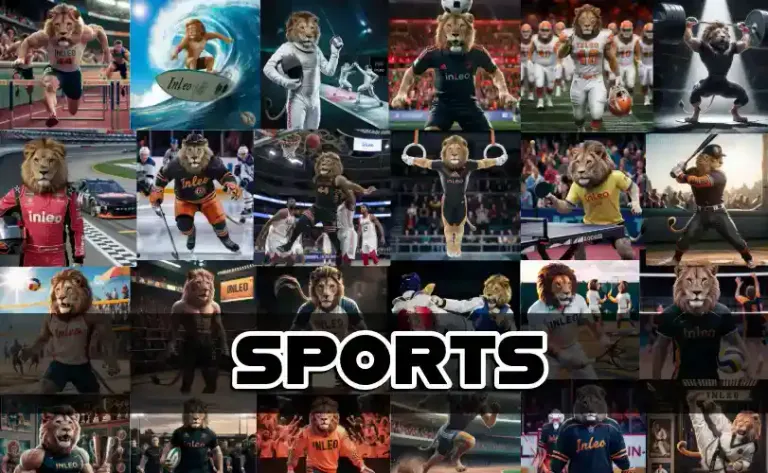Welcome to the daily sports #threadcast! Here we will discuss, follow and share all the news from the sporting world.
We want to make #inleo the premier destination for the #sports community by establishing the Leo platform as the hub for sports updates
Edition #183
January 12

!summarize #sports
... the first basketball game was played today in 1891.
Nice addition to our threadcast. Thanks!
!summarize #sports
!summarize #sports
!summarize #sports
!summarize #sports
!summarize #sports
!summarize #sports
!summarize #sports
!summarize #sports
!summarize #sports
!summarize #sports
!summarize #sports
!summarize #sports
!summarize #sports
!summarize #sports
!summarize #sports
!summarize #sports
!summarize #sports
!summarize #sports
!summarize #sports
!summarize #sports
!summarize #sports
!summarize #sports
!summarize #zionwilliamson #nba #neworleans #pelicans
Flamengo se acerta com Qarabag, e Juninho chega ao Rio nesta segunda-feira
O Flamengo chegou a um acordo com o Qarabag para contratar Juninho. Neste domingo, o clube do Azerbaijão deu "ok" para a versão final do contrato, e o atacante chegará ao Rio de Janeiro nesta segunda-feira para assinar contrato com o Rubro-Negro.
#sports #flamengo
Juninho fará exames médicos antes de assinar o vínculo que será válido por quatro anos, até o fim de 2028. Havia expectativa de o atacante se juntar ao grupo nos Estados Unidos para a pré-temporada, mas hoje é improvável que isso aconteça por causa da documentação de viagem.
Juninho estava sendo negociado antes com o Sevilla, da Espanha, mas o Flamengo entrou forte na negociação. Filipe Luís foi o responsável por convencer o atacante através de um telefonema no último fim de semana. Na quinta-feira, o Rubro-Negro formalizou a proposta oficial. O clube estava esperando concretizar a venda de Fabrício Bruno ao Cruzeiro, por 7 milhões de euros (R$ 44 milhões), para ter mais fôlego no caixa.
O atacante, que é agenciado pela empresa Marcio Bittencourt Sports, passou a ser monitorado por clubes europeus no ano passado, quando se destacou na Liga Europa. Foram 11 gols e duas assistências em 25 jogos na temporada 2024/2025.
Revelado pelo Athletico-PR em 2015, o atacante chegou ao Estoril Praia, de Portugal, em 2019. No país ainda jogou pelo Chaves antes de se transferir para o Qarabag em 2023. O clube do Azerbaijão segurou o assédio por Juninho nos últimos meses porque sonhava jogar a Liga dos Campeões em 2025. Como não foi classificado, o Qarabag aceitou vender o brasileiro e fechou negócio com o Sevilla até o Flamengo entrar na história e fazer o jogador mudar de ideia.
Arthur Zanetti se aposenta como atleta e traça novos rumos na ginástica: "Difícil dizer adeus"
"É difícil dizer adeus." Arthur Zanetti transcreveu em palavras o sentimente de deixar as competições. Aos 34 anos, 27 deles a serviço da ginástica artística, o campeão olímpico das argolas anunciou o fim de sua carreira como atleta. Chegou a hora da aposentadoria, anunciada neste domingo no "Esporte Espetacular" e em uma carta aberta.
#sports #olympics
Arthur Zanetti disputou três Olimpíadas. Foi o primeiro atleta latino-americano campeão olímpico ao vencer as argolas de Londres 2012. Na Rio 2016, conquistou a prata em casa. Foi para o tudo ou nada na final dos Jogos de Tóquio e acabou fora do pódio. No curto ciclo olímpico para os Jogos de Paris 2024, porém, as lesões minaram o caminho. Ele nem pôde tentar uma vaga. Passou por uma cirurgia no braço esquerdo em maio do ano passado.
Apesar de se aposentar como atleta, Arthur Zanetti não vai deixar o ginásio de São Caetano do Sul, no ABC Paulista, onde treina desde os sete anos de idade. Agora vai dar os primeiros passos como professor e técnico. No ano passado, também teve experiências como árbitro e como comentarista de ginástica.
Além das duas medalhas olímpicas, Zanetti tem quatro medalhas em Mundiais (um ouro e três pratas), seis em Jogos Pan-Americanos (três ouros e três pratas) e tantas em etapas de Copa do Mundo que até ele perdeu as contas. Chegou a ficar quase dois anos invicto entre 2012 e 2014. Um raro domínio que lhe rendeu o apelido de "Rei das Argolas".
!summarize #lsu #kyrenlacy #football
!summarize #detroit #lions #nfl
!summarize #cleveland #browns #nfl #draft
!summarize #shanebowen #nygiants #mikevrabel #newengland #patriots
!summarize #nygiants #dline #football #nfl #draft #michigan
!summarize #lasvegas #f1 #racing
!summarize #rexryan #texas #houston #playoffs
!summarize #notredame #conference #football
!summarize #masongraham #nfl #draft #dline
!summarize #quarterback #nygiants #nfl #draft
!summarize #niagrafalls #newyorkk #denver #broncos #nfl #playoffs
!summarize #denver #broncos #bonix #buffalo #bills #nfl
!summarize #seanpayton #denver #Broncos #playoff #nfl #buffalo #bills
!summarize #denver #broncos #buffalo #bills #playoffs #nfl
!summarize #denver #broncos #buffalo #bills #nfl #playoffs
!summarize #richeisen #denver #broncos #nfl #buffalo #bills
!summarize #buffalo #bills #bonix #devener #broncos #richeisen #kurtwarner #nfl
!summarize #baltimmore #ravens #pittsburgh #steelers #nfl #playoofs
!summarize #playoffs #steelers #pittsburgh #miketomlin #coach
!summarize #pittsburgh #steelers #baltimore #ravens #miketomlin #nfl
!summarize #pittsburgh #steelers #nfl #baltimore #ravens
!summarize #pittsburgh #steelers #nfl #miketomlin
!summarize #miketomlin #coach #pittsburgh #steelers